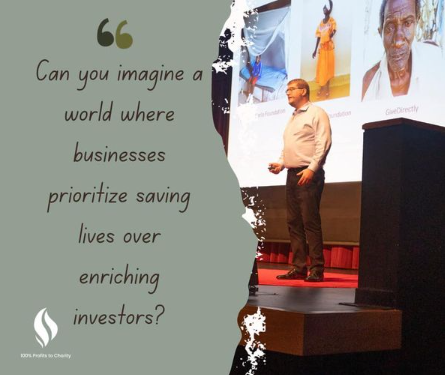We recently discovered a significant reporting error related to our 2020 performance metrics in which a single large donation was miscounted, overstating the money we moved to our recommended nonprofits by $4 million.
It is important to clarify that this was simply a clerical error; no money has been lost or unaccounted for.
The Life You Can Save and The Life You Can Save Australia both have their accounts audited by independent auditors who have found their financial statements are fairly and appropriately presented, without any identified exceptions, and in compliance with generally accepted accounting principles. However this donation was made directly to one of our recommended charities, and therefore never entered our audited accounts. Our mistaken treatment of the donation in our performance metrics was due to a miscommunication with the donor about the magnitude of the donation.
Given the considerable size of the donation, this isolated reporting error had an outsized impact on our overall 2020 impact reporting. Most importantly, it caused us to overreport several critical performance metrics from 2020, including our “Money Moved” and “3 Year Leverage Ratio,” as well as our “3 Year Leverage Ratio” in 2021.
In this blog post, we want to take a moment to apologize to our supporters for this mistake and revise the affected metrics accordingly.
Please note the following corrections to our 2020 and 2021 performance metrics:
- In our 2020 Annual Report, we mistakenly reported our “Total Money Moved” to be roughly US$18.2 million. We now estimate our 2020 “Total Money Moved” to be roughly US$14.2 million. For context, our “Total Money Moved” metric provides a conservative estimate of the total amount of donations to our recommended charities that our organization either directly processed or indirectly inspired. For a detailed explanation of our “Total Money Moved” metric and how we calculate it, please see the Appendix of our 2021 Annual Report. Our 2020 growth in Money Moved relative to 2019 was also slower than we originally thought.
- In our 2020 Annual Report, we mistakenly reported our “Net Impact” to be roughly US$17.5 million. We now estimate our 2020 “Net Impact” to be roughly US$13.5 million. For context, our Net Impact represents our Total Money Moved minus our total operating expenses for a given year (i.e. US$14.2 million – US$674,113 in 2020). For a detailed explanation of our “Net Impact” metric and how we calculate it, please see the Appendix of our 2021 Annual Report. Our 2020 growth in Net Impact relative to 2019 was also slower than we originally thought.
The following table shows our updated numbers for our 2020 Money Moved and Net Impact, and growth rates in these metrics (we originally shared these numbers in our 2020 Annual Report, which we will amend). The bolded values are the ones that have changed as a result of this mistake.
| Metric | 2020 | 2019 | 1 yr % Change |
|---|---|---|---|
| Net Impact | $13,503,713 | $12,176,516 | 11% |
| Money Moved | $14,177,826 | $13,161,224 | 8% |
| Money Moved Excluding $1M + Donations | $12,077,826 | $6,637,793 | 82% |
| Expenses | $674,113 | $984,708 | -32% |
- A third important metric affected by this 2020 reporting error is our “Three Year Leverage Ratio.” If you take all the money we raise for our nonprofits in a given year and divide that number by our operational expenses from that same year, you get what we call our “leverage ratio” for that year. To gauge our impact over time, we rely on a “3-year leverage ratio,” which is simply our average annual leverage ratio over the past three years. For a detailed explanation of our “Leverage Ratio” metric and how we calculate it, please see the Appendix of our 2021 Annual Report.
In our 2020 Annual Report, we misestimated our “Three Year Leverage Ratio” for 2018-2020 to be 17 based on our inaccurate “Total Money Moved” estimate for 2020. We now estimate our “Three Year Leverage Ratio” for 2018-2020 to be 15. Similarly, in our 2021 Annual Report, we mistakenly reported our “Three Year Leverage Ratio” for 2019-2021 to be 18. We now estimate our “Three Year Leverage Ratio” for 2019-2021 to be 17. In other words, from 2019-2021, we estimate that we raised an average of just over US$17 for our recommended charities for every US$1 we spent on our own operations.
Again, we apologize for this error in our reporting and will be implementing additional measures to ensure it does not occur again. Please accept our sincerest apologies. If you have any questions or concerns, please feel free to contact us at info@thelifeyoucansave.org.



